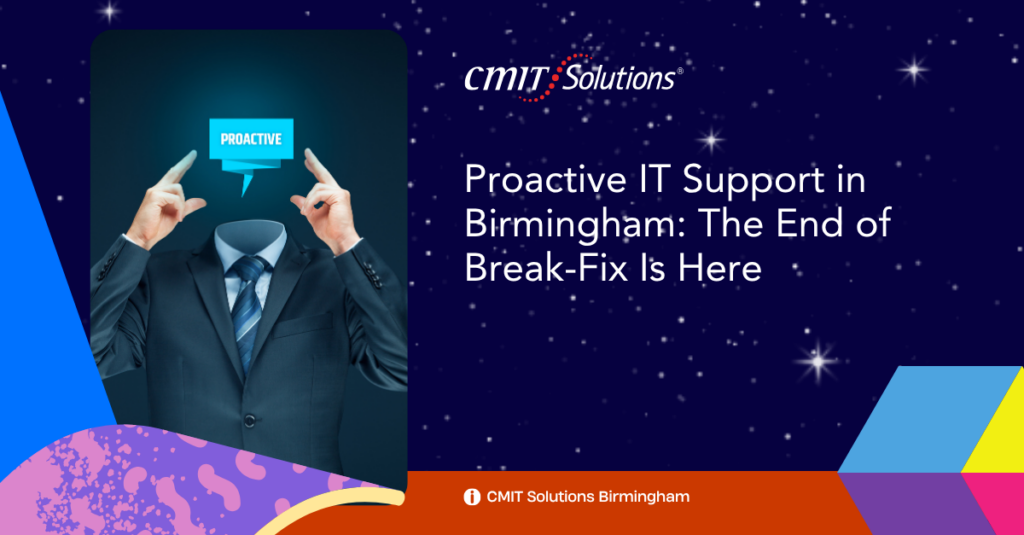Every office has it aging servers humming in a closet, laptops that haven’t been updated in years, or outdated applications still running on legacy operating systems. This “digital dust” might seem harmless as long as the equipment powers on and the software continues to function. But much like real dust, it quietly accumulates until it becomes a serious problem.
Behind the scenes, outdated technology creates vulnerabilities, drags down productivity, and limits growth. Small and mid-sized businesses (SMBs) that ignore these issues often face escalating maintenance costs, regulatory penalties, or costly security breaches. Here’s how to recognize the risks of legacy technology and why cleaning up digital dust is critical for long-term success.
What Is Digital Dust and Why It Builds Up
Digital dust is the buildup of outdated hardware, software, and operating systems that continue to run long after their recommended lifecycle. Examples include:
- Workstations or laptops still using unsupported operating systems such as Windows 7 or aging versions of Windows 10.
- Legacy applications that no longer receive vendor updates or patches.
- Old network switches or routers that can’t meet today’s encryption standards.
These assets linger because they “still work,” budgets are tight, or replacement seems disruptive. But every month they remain in service, they become more difficult and expensive to manage.
Cybersecurity Risks Hidden in Legacy Systems
Old technology is a hacker’s dream. Unsupported systems lack security patches, leaving them wide open to malware, ransomware, and phishing campaigns.
Key risks include:
- Unpatched vulnerabilities: Attackers can exploit known flaws to steal data or deploy ransomware.
- Weak encryption: Older devices often can’t handle modern encryption protocols.
- Limited monitoring: Legacy equipment may not integrate with modern security tools, making breaches harder to detect.
The growing frequency of cyberattacks highlights why zero trust security is critical. Zero trust verifies every connection inside and outside the network so even if a device is compromised, hackers can’t easily move laterally.
Compliance Pressures and Regulatory Risk
Regulatory requirements such as GDPR, HIPAA, and PCI DSS demand strict data protection. Old technology makes compliance harder by lacking audit logs, encryption, or multi-factor authentication.
- Healthcare providers risk HIPAA violations if patient data resides on unsupported servers.
- Retailers accepting credit cards face PCI DSS fines if legacy systems store unencrypted payment data.
- Businesses handling European customer data may violate GDPR if security patches are missing.
Automated IT governance tools help SMBs enforce consistent policies and generate audit-ready reports even as regulations evolve.
The True Cost of “Saving Money”
Many SMBs keep outdated equipment to avoid capital expenses. But this false economy hides mounting operational costs:
- Frequent repairs and downtime increase service calls and lost productivity.
- Higher energy consumption from inefficient hardware raises utility bills.
- Vendor surcharges for extended support can exceed the cost of replacement.
In many cases, the “cheaper” option of maintaining old tech ends up costing more than investing in newer solutions. Businesses that adopt smarter tech buying strategies can plan upgrades to reduce long-term expenses while improving performance.
Productivity Losses You Can’t Ignore
Outdated systems don’t just create security gaps, they slow employees down. Common frustrations include:
- Long boot-up times and frequent crashes.
- Incompatibility with modern collaboration tools.
- Slow network speeds and unreliable connections.
When employees spend minutes waiting for software to load or connections to stabilize, customer service suffers and revenue opportunities are lost. Upgrading to next-gen network management can dramatically improve speed and reliability.
Data Vulnerabilities and Backup Gaps
Legacy systems often store sensitive data in unencrypted formats or rely on outdated backup solutions. Without proper safeguards, businesses face:
- Irrecoverable data loss if hardware fails.
- Incomplete backups that don’t capture cloud-based or remote work data.
- Extended downtime following ransomware attacks or disasters.
Implementing modern data backup strategies ensures critical information is protected and recoverable whether it resides on-premises, in the cloud, or on employee devices.
Operating Systems at End of Life
Operating systems eventually reach an end-of-life (EOL) stage, when vendors stop releasing security patches. Continuing to run EOL systems exposes your business to immediate threats.
For example, Microsoft will retire Windows 10 support in the near future. Companies that don’t plan ahead will face costly emergency upgrades. CMIT Solutions warns that Windows 10 retirement requires proactive planning to avoid sudden vulnerabilities.
How Legacy Tech Blocks Innovation
Digital dust not only creates risk; it limits growth. Older systems:
- Can’t integrate with advanced analytics or AI-driven tools.
- Prevent adoption of cloud-based services.
- Make scaling operations to new markets more complex.
Businesses that delay upgrades miss opportunities to leverage AI-powered productivity tools and other emerging technologies that drive efficiency and profitability.
A Strategic Plan to Clean Up Digital Dust
Cleaning up outdated technology requires more than ad hoc replacements. A structured approach includes:
- Comprehensive IT Audit – Identify outdated hardware, unsupported operating systems, and end-of-life applications.
- Risk Prioritization – Rank upgrades based on security vulnerabilities, compliance requirements, and business impact.
- Hybrid Cloud Adoption – Shift critical workloads to scalable, cloud-based platforms following best practices for cloud strategy planning.
- Ongoing Monitoring – Implement proactive maintenance to prevent new digital dust from accumulating.
Partnering with a managed service provider that offers tailored IT solutions ensures upgrades align with budget and growth objectives.
Building a Future-Proof Infrastructure
The best way to prevent digital dust from returning is to design an IT environment that evolves with your business. Key steps include:
- Lifecycle management to schedule timely replacements before hardware becomes obsolete.
- Zero trust architecture to protect data across all devices and networks.
- Proactive monitoring to catch emerging risks early.
Businesses that follow future-proof infrastructure planning can adapt to new technologies without disruptive overhauls.
The Role of Proactive IT Support
Managing upgrades and ongoing maintenance can overwhelm small internal teams. Proactive IT support provides:
- Continuous network monitoring to detect early signs of hardware failure.
- Automated patching and updates to reduce human error.
- Strategic planning for phased replacements to spread costs over time.
This partnership ensures your technology stays current without diverting resources from core business operations.
Turning Cleanup Into Competitive Advantage
Eliminating digital dust isn’t just about avoiding risk—it’s a chance to leap ahead of competitors. Upgrading legacy systems enables:
- Faster customer response times and more reliable service delivery.
- Greater flexibility to adopt cutting-edge tools like AI chatbots or advanced analytics.
- Improved employee satisfaction with modern, efficient technology.
SMBs that embrace strategic upgrades position themselves for innovation and long-term success.
Conclusion
Old technology might seem “good enough” today, but every outdated device and unsupported system adds invisible costs and hidden dangers. The longer upgrades are postponed, the greater the risks cyberattacks, compliance fines, lost productivity, and missed growth opportunities.
By conducting a thorough IT audit, implementing technology strategy planning, and working with a trusted IT partner, SMBs can sweep away digital dust and create a secure, agile infrastructure that supports future growth.








